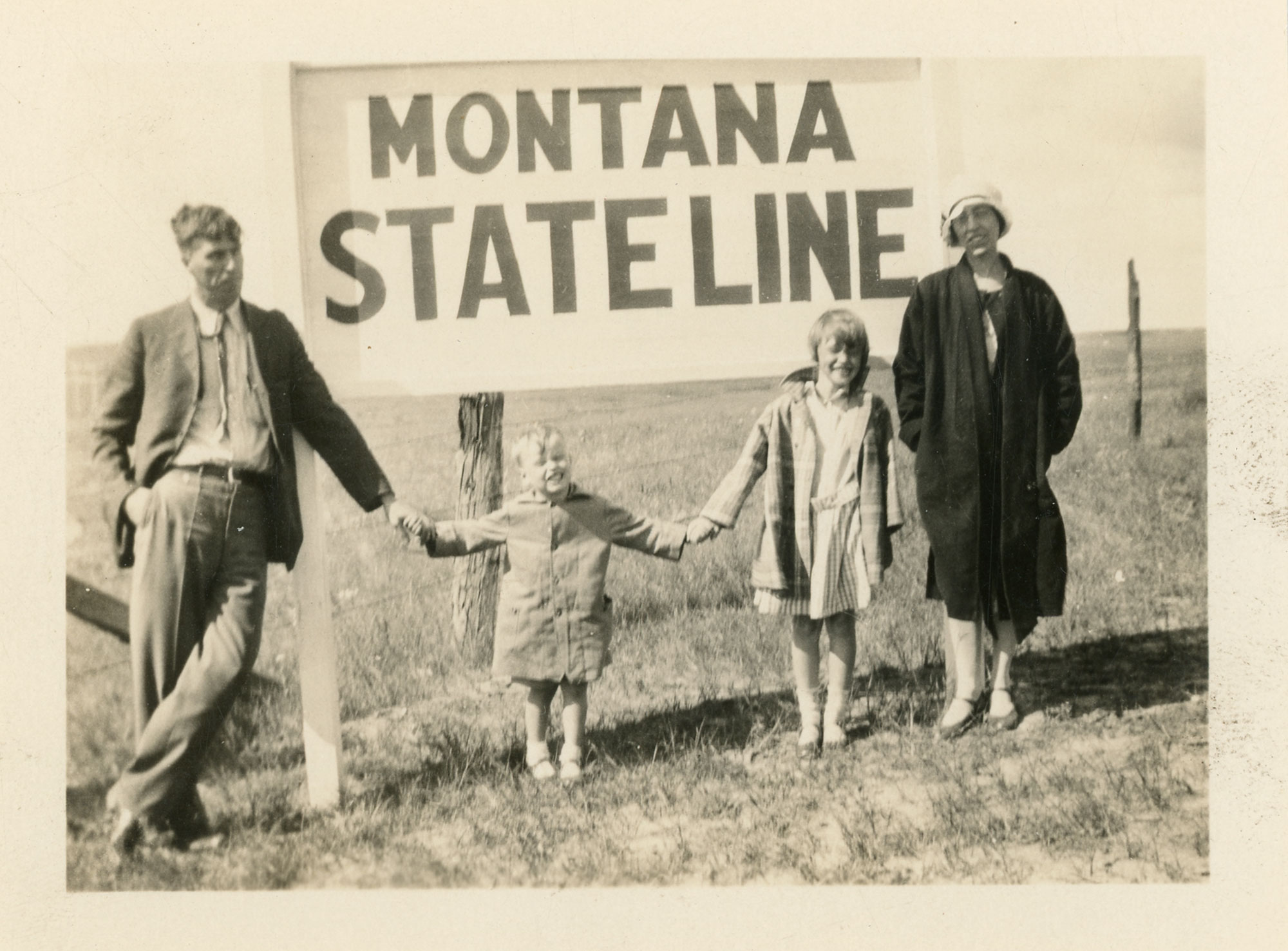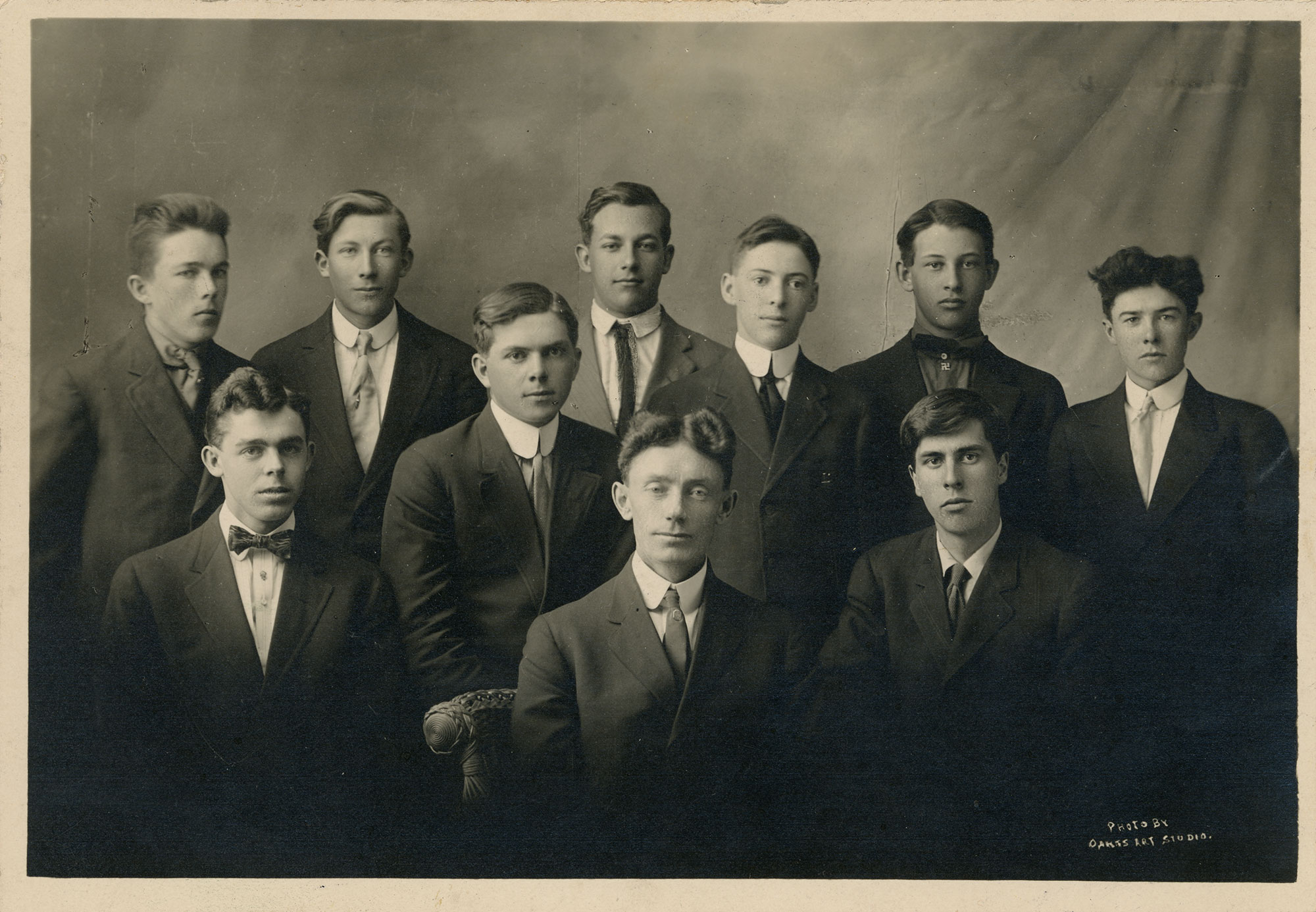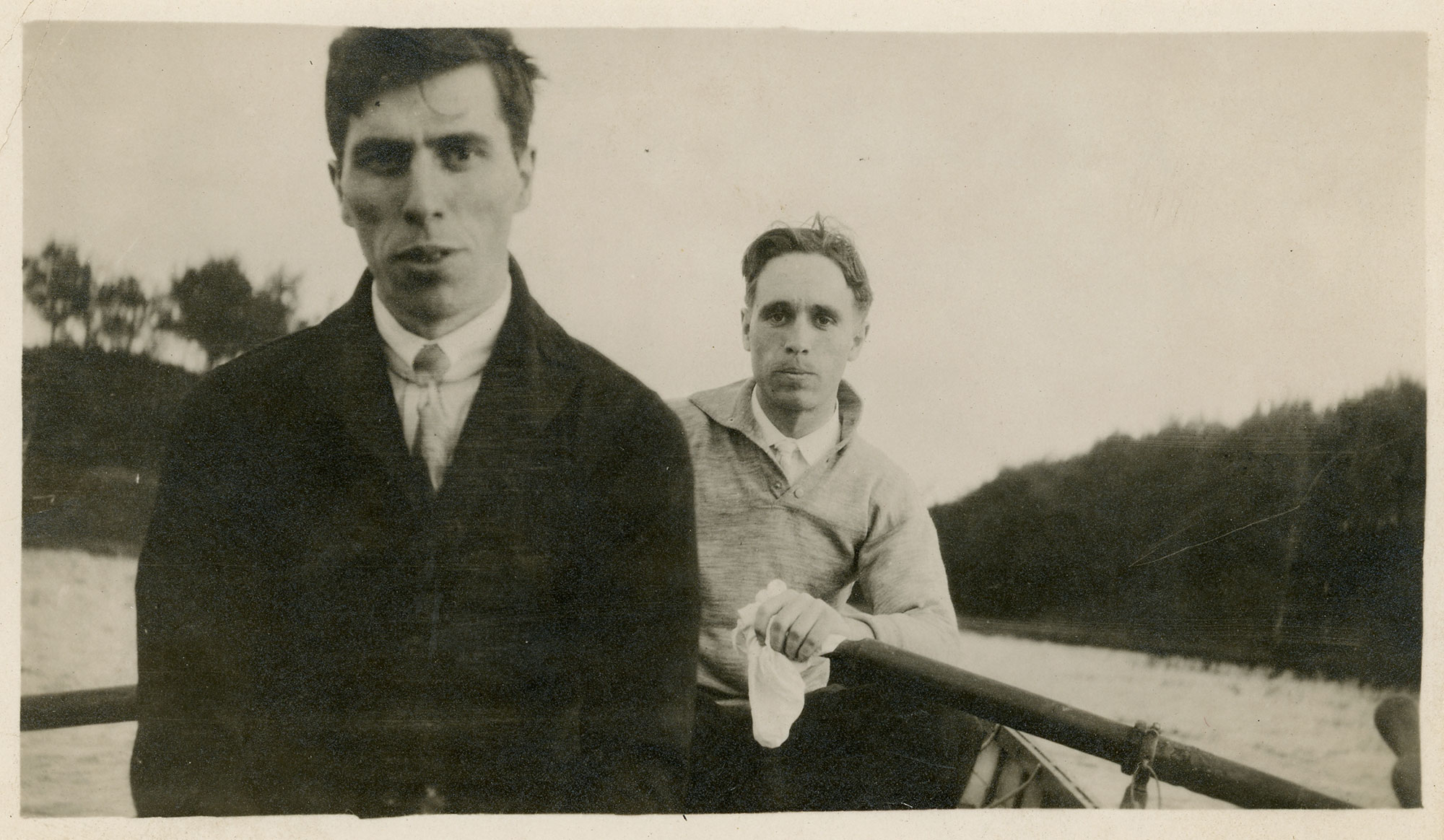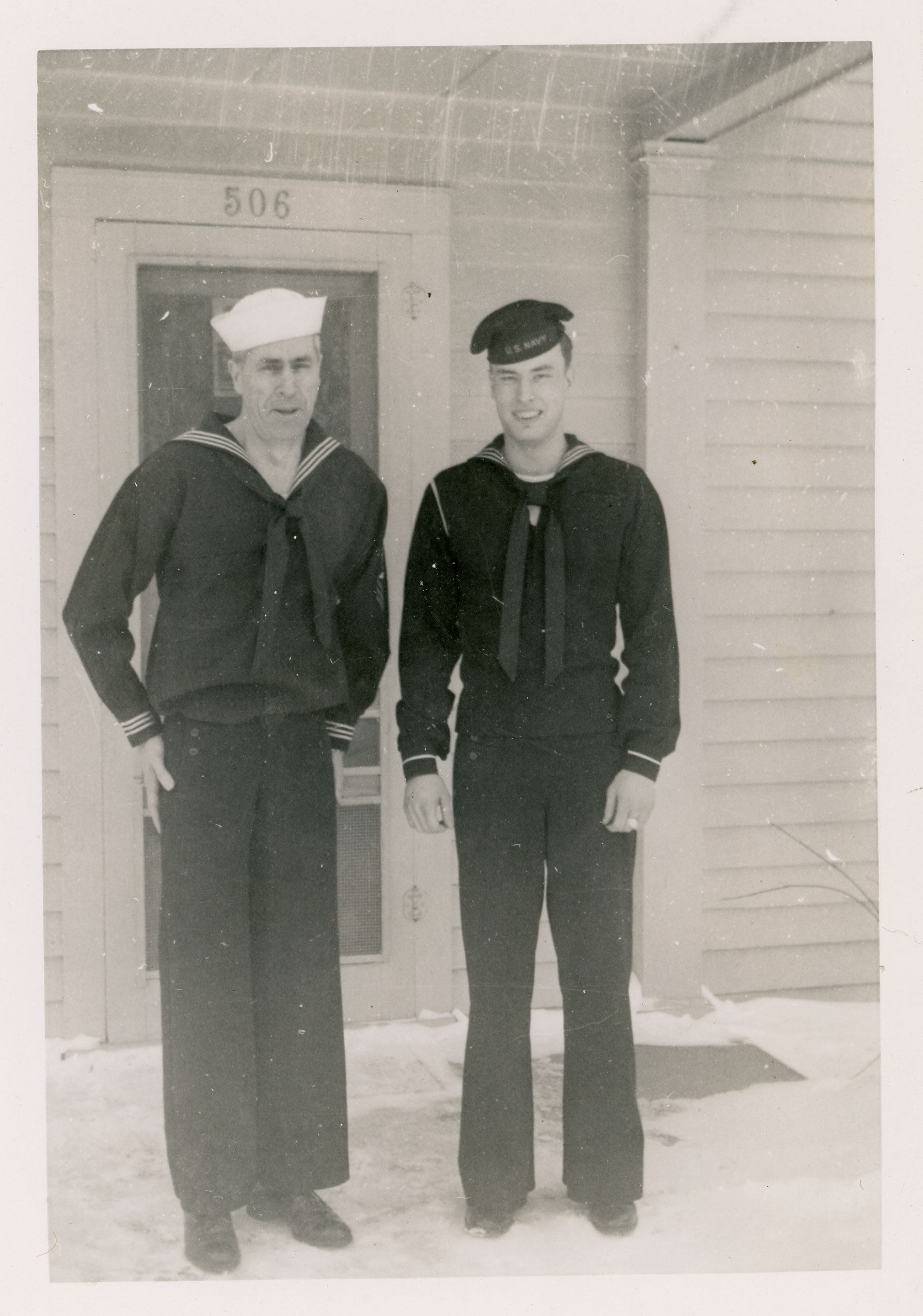The architectural work of the Ritterbush family has left a lasting impact on North Dakota. Responsible for a vast range of public spaces and civic buildings, their legacy touches all corners of the state. As interns this summer, we worked directly with the Ritterbush architectural drawings and family photograph collection at the State Archives, helping to scan and catalogue the agency’s holdings.
Migrating from New England in 1882, the Ritterbush-Dyer family settled in Oakes, where they met the Nichols family, early homesteaders in Dakota Territory. Robert A. Ritterbush married Ruth Nichols, a deeply involved community member active in teaching, homemaking, and the local church. The couple later moved to Bismarck, where they had two children, Robert H. and Elizabeth Ritterbush.

The Ritterbush family pictured at the Montana state line sign, circa 1930. From left: Robert A., Robert H., Elizabeth, and Ruth Ritterbush. The Ritterbushes celebrated art, nature, and adventure, and this was taken on one of their many road trips around North Dakota. SHSND SA 11636-02070

The Oakes High School Glee Club was organized by the local Presbyterian minister and consisted of male students, including Robert A. Ritterbush (front row, right), 1920. SHSND SA 11636-05113
Clarence Ritterbush, the younger brother of Robert A., was considered an unconventional gentleman. Standing 5 feet, 5 inches tall with an outgoing nature and dapper style, he remained an adventurous bachelor until the age of 58, when he settled down with his wife, Caroline (Boehrnsen) Ritterbush.
The brothers began their career at an early age. Robert A. and Clarence Ritterbush received training in construction and design from their contractor father in their hometown of Oakes. Rarely apart, the brothers attended the Ohio Mechanics Institute in Cincinnati, until the death of their father prompted their return. Enlisting in the Navy in 1917, the brothers served together in World War I before returning home to partner with their former mentor, Arthur Van Horn, to found the Van Horn-Ritterbush, Inc. architectural firm in Bismarck. Their firm quickly established a name and reputation around the state, with Robert A. writing in 1931 that 90% of buildings in downtown Bismarck were designed by Van Horn-Ritterbush.

Though this photograph has no story or date attached to it, it shows the brothers as they were throughout their youth—inseparable. Here, Robert A. (left) and Clarence Ritterbush pose while rowing a boat. SHSND SA 11636-01693
Even while living apart later in life, the brothers continued their partnership for decades. While working in cities such as Chicago and Skagway, Alaska, Clarence often sent sketches back to Bismarck, where Robert A. resided. Eventually their firm was passed down to Robert A.’s son Robert H. and took on the name Ritterbush Associates. Following in his father and uncle’s footsteps, Robert H. Ritterbush continued to grow the firm as a well-known and trusted name.

Like his father, Robert H. Ritterbush enlisted in the Navy. In this photo, father and son pose in their Navy uniforms from two global conflicts (World War I and World War II) decades apart, circa 1945. SHSND SA 11636-04830
Today, the Ritterbush legacy can still be seen on business streets across western and central North Dakota. Their highly detailed blueprints, donated by the Ritterbush Associates of Bismarck in 1985, highlight their meticulousness and dedication to construction and design. Sharing a passion for history, family, and photography, the family also amassed a vast collection of letters, portraits, and postcards from around the world. Many items are accompanied by a humorous story, revealing their humility in the face of success. The Ritterbushes are truly a family who represent the growth of North Dakota, its people and communities.

